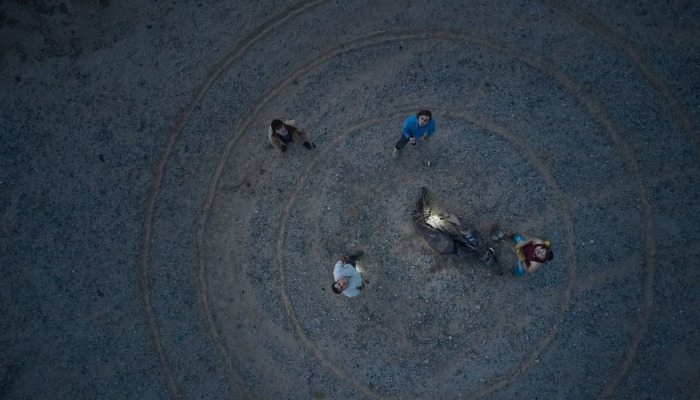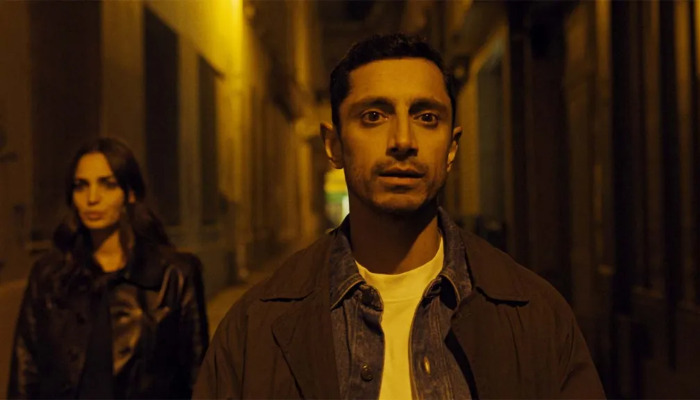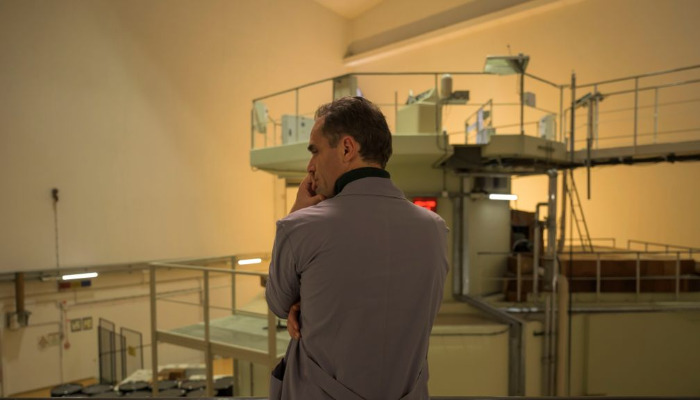Film Review: ASWANG: A Prescient Document of a Cultural Nightmare [Locarno 2021]
Aswang Review
Aswang (2019) Film Review from the 74th Annual Locarno Film Festival, a movie written and directed by Alyx Ayn Arumpac, featuring Ciraco Santiago III, Orly Fernandez, Vincent Go, and Ezra Acayan.
According to Filipino folklore, the aswang is “a shapeshifter that preys on humans”. Like many mythical beings that are informed through numerous regional legends, it’s an umbrella term that encapsulates many different appearances and powers. But whether this cryptid actually exists is irrelevant because to be warned about an aswang is just a reminder to “be afraid”, as the narration in Alyx Ayn Arumpac’s documentary of the same name readily points out.
Filmed in the wake of Rodrigo Duterte’s election to president of the Philippines in 2016, Aswang takes us through the streets and alleyways of the island nation’s cities to reveal firsthand the cultural and economic violence being inflicted upon the lower classes. In the past few years, the country’s war on drugs that Duterte has spearheaded has resulted in an explosion of inhumane judicial practices – particularly extrajudicial killings of low-level drug abusers. While Duterte’s government has denied their influence on these killings (which are mostly committed by roving gangs, but sometimes allegedly carried out by cops or other government officials), the results of his rhetoric are still communities being torn apart and thrown into prolonged states of paranoia.
Contrary to what one might suppose, the framing of these violent events through the lens of a folkloric boogeyman does not soften their blow. In fact, doing so inherently supports folklore’s original purpose, which is to rationalize the inconceivable in order to cope with an unstable reality. Arumpac shows us that the real shapeshifting creature is state violence in how it slinks throughout various neighborhoods and countless epochs, preys upon the most convenient or accessible victims of the moment, and then lurches back into the darkness to evade capture. Without a systemic overhaul to ensure such an abusive monster’s destruction, it’s only logical that its mysticism will be pathologized.
Arumpac and co-cinematographer Tanya Haurylchyk don’t shy away from the abject poverty of the lower rungs of Filipino society. They throw themselves into the thick of it, refusing to flinch for any discomforting image.
One of the people they follow is Jomari, a homeless young boy and de facto orphan on account of both his parents being thrown into jail for drug use. He makes the most of his days, trying to find any bit of money – be it actual cash, or trash that he can repurpose and turn around to make a profit – to buy some food or some new clothes for when he visits his mom in jail. (There’s a scene where Arumpac and her crew take him to a local market to buy him shoes and he enthusiastically selects a pair of Captain America flip-flops, unaware of the cruel irony in choosing an idol of a country that supposedly represents peace and prosperity.)
The young boy recounts his struggles with such a straight-faced monotony – undoubtedly due to childhood naïveté, but also in part due to psychological necessity. He defends his parents’ honor against the neighborhood children’s taunts, even though he’s scared for his family’s future. And yet, he still allows himself the time to have fun as he roughhouses with the other boys along the river’s edge.
Jomari’s struggle is a snapshot of what Aswang is getting at, which is the cognitive dissonance that many Filipinos live with on a daily basis. Arumpac and Haurylchyk’s cameras frequently frame their cityscapes with a random body or two splayed along the street in the background – sometimes those of homeless individuals with nowhere else to go, but frequently those of recently murdered individuals. While these shots start to look excessive based on their sheer number, they never really exude an exhibitionist feel. The shock felt in us viewers as many of the residents gawk at the bodies (or just straight-up ignore them) does not go by unnoticed.
This is not meant to imply a cultural callousness, though, as these shots are then juxtaposed with emotionally charged events – from a grief-stricken mass funeral to a righteously angry anti-Duterte protest, to tearful individuals recounting their lost brothers and sisters and children. Many interviewees still voice support for Duterte – as one man bawling over the recent murder of his brother is quick to point out – yet they simultaneously abhor the president’s approach to drug enforcement. The drug users (who Arumpac admirably frames in an anonymous way) are aware of the risks they run and yet they continue their habits in a desperate attempt to seek some temporary respite; others, conversely, throw themselves into workaholic lifestyles “so [they] can forget the pain”. Through this set-up, Arumpac lays bare the culture-wide ideological schism of her country, which in turn reveals the dearth of humanity a system built on mass socioeconomic inequality perpetuates.
Aswang is a prescient document of a cultural nightmare, bringing national rhetoric down to the personal level. It’s intense to watch, but not nearly as intense as it must be to live it.
Rating: 8/10
Leave your thoughts on this Aswang review and the film below in the comments section. Readers seeking to support this type of content can visit our Patreon Page and become one of FilmBook’s patrons. Readers seeking more Fantasia International Film Festival news can visit our Locarno Film Festival Page, our Film Festival Page, and our Film Festival Facebook Page. Readers seeking more film reviews can visit our Movie Review Page, our Movie Review Twitter Page, and our Movie Review Facebook Page. Want up-to-the-minute notifications? FilmBook staff members publish articles by Email, Twitter, Facebook, Instagram, Tumblr, Pinterest, Reddit, and Flipboard.
Related Articles
FilmBook's Newsletter
Subscribe to FilmBook’s Daily Newsletter for the latest news!













